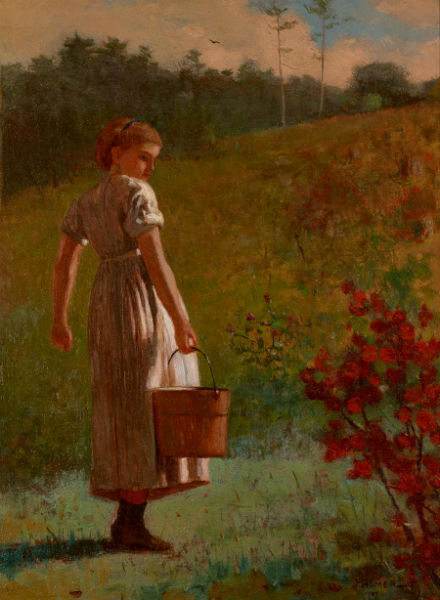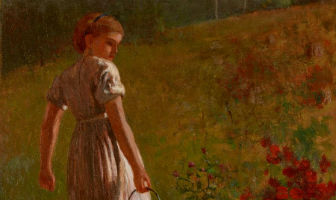
PORTLAND, Maine — The Portland Museum of Art has received a major gift of works by American artist Winslow Homer through the generosity of the Berger Collection Educational Trust. The Berger gift strengthens the Portland Museum of Art’s position as one of the leading institutions in the world to experience the art and legacy of Winslow Homer.
“I am honored and deeply grateful to the Berger Trust for holding the PMA in such esteem,” said Mark H.C. Bessire, director of the Portland Museum of Art. “The Berger Trust held a thorough selection process for this bequest, and in giving these works to the PMA, they are not only recognizing the unbelievable devotion of the PMA Board and staff, but the passion of the Maine community for supporting the arts.”
The Berger gift strengthens the Portland Museum of Art’s position as one of the premier destinations to experience the artworks and legacy of Winslow Homer. In addition to these acquisitions and an extensive collection of Homer works, the PMA owns the Winslow Homer Studio in Prouts Neck, Maine, where Homer lived and worked until his death in 1910, which is a significant part of the museum’s collection and campus.
“The mission of the Berger Collection Educational Trust is sponsoring programs that foster art appreciation and creativity. To this end, Bill and Bernadette Berger assembled a collection of works that would encourage such programs at the Portland Museum of Art. I believe that the couple would be proud that the donation of works from their foundation meets this goal,” Arthur Lipper, chairman of BCET.
Highlights of the gift from the Berger Trust in honor of the preservation of the Winslow Homer Studio include paintings Returning from the Spring, 1874, and Young Farmers (Study for Weaning the Calf), 1873-1874, as well as nearly a dozen other works made by Homer during his career. A full checklist is available here.
“We are excited to welcome these works of art back to Maine,” said Bessire. “There is no better home for the works of Winslow Homer than in the region that meant so much to him. We cannot wait to make these works accessible to all Mainers and visitors to our state and to expand upon the stories that our Winslow Homer collection can tell. The gift is especially meaningful given the Berger family’s deep connection and philanthropy at the Portland Museum of Art, the Winslow Homer Studio, and the Prouts Neck community.”
The Berger Collection is a major private collection largely of British art, with a small but significant group of works by artists of other schools, including the French artist François Boucher and the American Winslow Homer. The late William M.B. Berger and his wife, Bernadette Johnson Berger, began amassing this collection in the mid-1990s out of their dual passion for British culture and for art’s potential to educate. The Berger Collection Educational Trust was established to sponsor educational activities related to the Berger Collection, British art, and the people, culture, and history the works portray. Dedicated to making the collection an educational resource accessible to all, the BCET intends to develop programs that will connect people with art.
Widely regarded as one of the greatest American artists of the 19th century, Winslow Homer (1836-1910) has strong ties to Maine and the Portland Museum of Art. The PMA has deep holdings of his works spanning his entire career. It owns and operates the Winslow Homer Studio, a landmark building perched on the rocky coast of Maine in which the artist resided from 1884 until his death; and the museum’s Charles Shipman Payson Building was built in 1983 in part to provide exhibition space for a large gift of Homer works from Charles Shipman Payson.
The PMA is uniquely positioned to explore the art and life of Winslow Homer with an art collection that encompasses significant works representing the range of media, subject matter, and periods in which he worked. His early career is represented by a nearly comprehensive collection of Homer’s graphic output that traces his early career as a commercial illustrator, as well as first professional oil painting, Sharpshooter (1863). This Civil War-related painting exemplifies Homer’s profound talent as an astute observer of modern life in its exploration of how modern technology transformed warfare.
The leisure and rural subjects that dominated his art during the late 1860s and 1870s are showcased in wood engravings, watercolors and an oil painting. One of the masterpieces of the PMA collection, Weatherbeaten (1894), which depicts waves crashing against the rocky shore of Prouts Neck, is a virtuoso demonstration of the aesthetic and metaphorical power of his Maine seascapes. Other late works include watercolors of Cullercoats women and of men hunting and fishing, as well as Eight Bells, an example of Homer’s brief foray into etching while he lived at Prouts Neck


